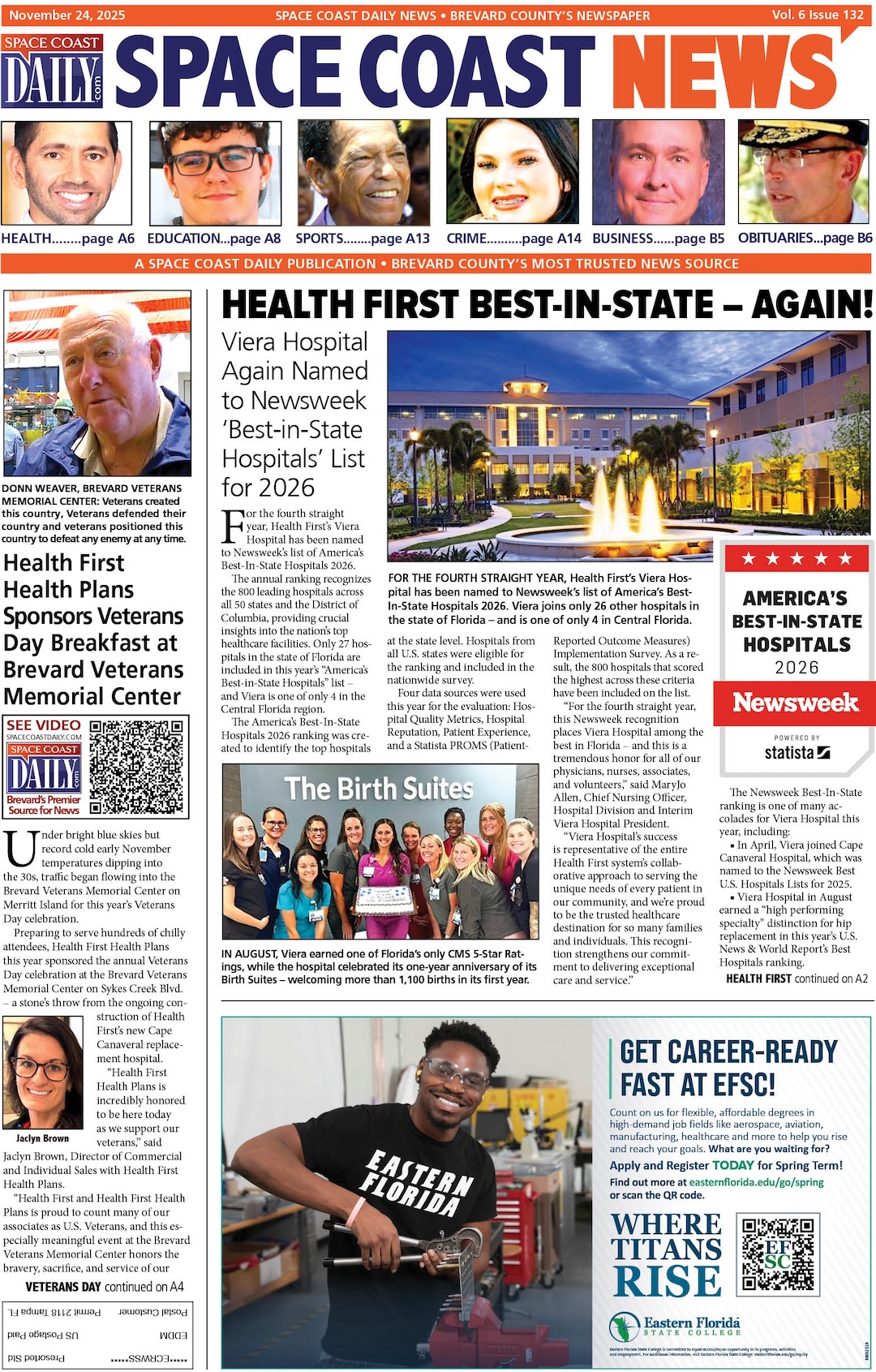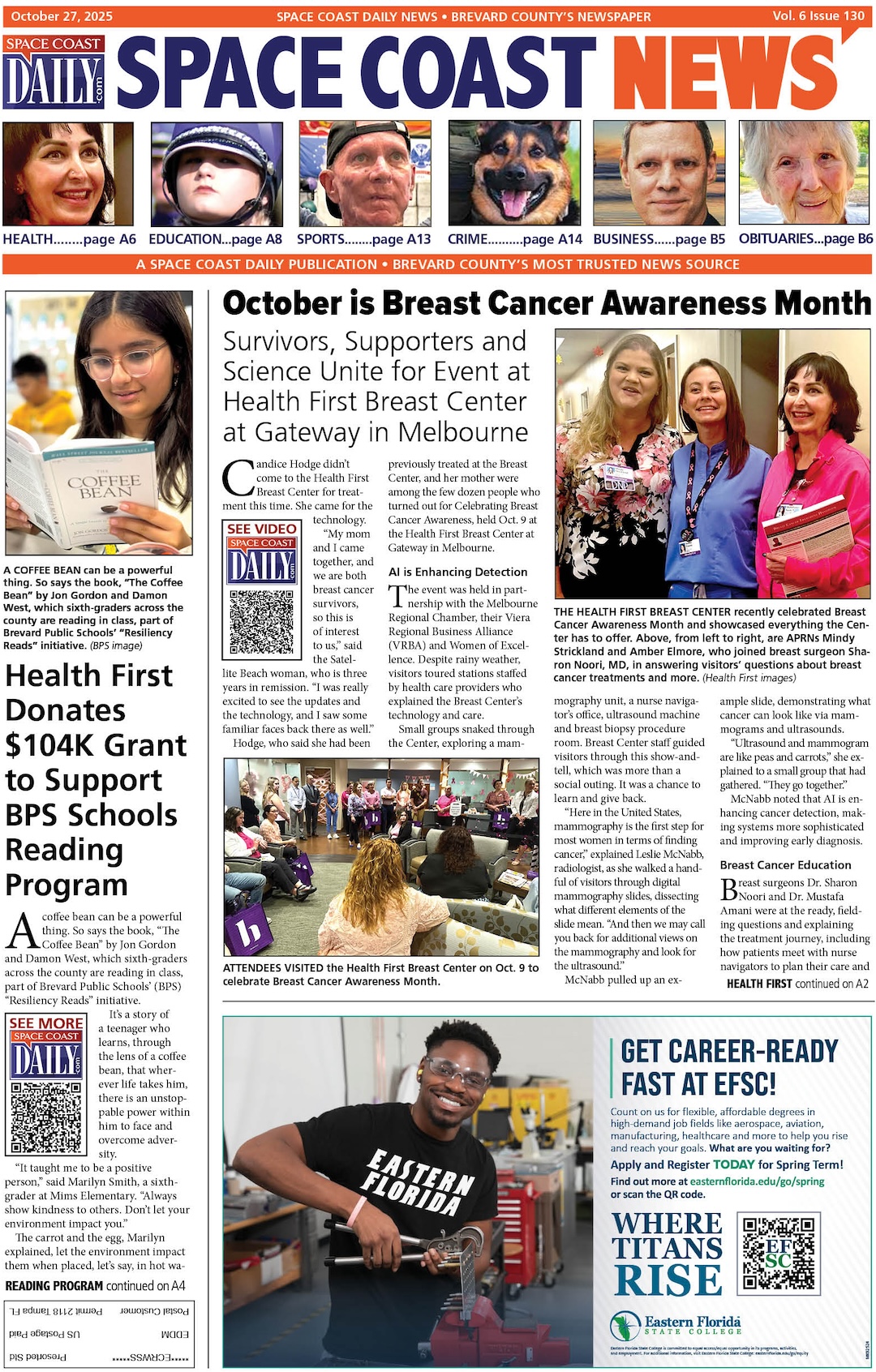10 ACLS Test Questions To Ace Your Certification Exam
By Space Coast Daily // November 15, 2024

When preparing for your Advanced Cardiovascular Life Support (ACLS) certification exam, it’s essential to have a thorough understanding of various topics.
The exam evaluates your knowledge of critical emergency procedures and protocols, making comprehensive preparation crucial for achieving high scores. To assist you in excelling, here is a list of 10 important ACLS practice test questions. Mastering these questions will provide a solid foundation and enhance your confidence for the exam.
Top ACLS test questions for your certification
Familiarizing yourself with common ACLS practice test questions can significantly improve your chances of passing the exam. Here are some key questions to focus on as you prepare for your ACLS certification test:
-
What is the primary goal of ACLS?
Improving patient outcomes for those suffering from cardiac arrest, stroke, and other serious cardiovascular emergencies is the main objective of ACLS. ACLS protocols aim to provide a systematic approach to managing these circumstances and increasing the probability of survival. You must understand the need for early defibrillation, effective chest compressions, and timely medication administration.
-
What is the recommended compression depth for chest compressions in adult CPR?
The recommended compression depth for adult CPR is 2.4 inches (6 cm). However, it should be at least 2 inches (5 cm). It’s crucial to ensure that compressions are deep enough to create adequate blood flow but not so deep that they cause injury. Additionally, aim for a compression rate of 100-120 compressions per minute. Mastery of this ACLS practice test question is essential for the exam and practical application.
-
What are the signs that defibrillation is necessary?
Defibrillation is required when a patient is in a shockable rhythm, such as ventricular fibrillation (VF) or pulseless ventricular tachycardia (VT). These rhythms are characterized by chaotic electrical activity or a rapid heartbeat that prevents the heart from pumping effectively. Recognizing these signs and knowing when to use an automated external defibrillator (AED) or manual defibrillator is important.
-
How do you differentiate between ventricular fibrillation and ventricular tachycardia on an ECG?
Ventricular fibrillation (VF) and ventricular tachycardia (VT) can appear similar but have distinct characteristics on an ECG. VF presents as a rapid, erratic, and irregular waveform without a discernible pattern. VT, on the other hand, is characterized by a series of rapid, uniform QRS complexes.
-
What is the first drug administered during an adult cardiac arrest, and when should it be given?
The first drug administered during an adult cardiac arrest is epinephrine. It should be given after the initial cycles of chest compressions and defibrillation, typically every 3-5 minutes during the resuscitation process. Epinephrine helps to improve blood flow to the heart and brain by constricting blood vessels, which can increase the likelihood of successful resuscitation.
-
What is the algorithm for managing a patient with an advanced airway in place?
When managing a patient with an advanced airway (such as an endotracheal tube) in place, you should continue with chest compressions without pausing for breaths. Provide continuous compressions at a rate of 100-120 per minute and ensure that ventilations are given at a rate of 1 breath every 6 seconds (10 breaths per minute). Proper ventilation technique and timing are key to effective resuscitation.
-
What constitutes the core of care following a cardiac arrest?
Post-cardiac arrest care is an important ACLS practice test and it involves several critical steps to improve patient outcomes. Key components include:
- Targeted temperature management (TTM): Maintaining controlled hypothermia to protect brain function.
- Hemodynamic stabilization: Ensuring adequate blood pressure and cardiac output.
- Monitoring and managing potential complications: Including arrhythmias and organ dysfunction.
- Neurological assessment: Assessing the neurological and conscious states of the patient.
-
What should you do if a patient with a suspected acute coronary syndrome (ACS) is in severe pain?
For a patient with suspected acute coronary syndrome (ACS) who is experiencing severe pain, administer nitroglycerin if there are no contraindications such as hypotension or right-sided heart failure. Nitroglycerin dilates coronary arteries, which helps to reduce chest pain. Additionally, consider ACLS practice test questions regarding administering morphine if pain persists despite nitroglycerin and if the patient is in distress.
-
How should you handle a patient who is experiencing a stroke?
For a patient experiencing a stroke, you need to act quickly and follow the stroke management protocol. Key steps include:
- Assessing the time of onset: Determine when the symptoms started to guide treatment decisions.
- Performing a thorough assessment: Use the stroke scale or the FAST (face, arm, speech, time) to evaluate symptoms.
- Rapid transport: Ensure the patient is taken to a facility capable of providing specialized stroke care, including potential thrombolysis within the treatment window.
-
What does the term “H’s and T’s” in ACLS mean?
The “H’s and T’s” are a mnemonic used to remember the reversible causes of cardiac arrest. They stand for:
- H’s: Hypovolemia, hypoxia, hydrogen ion (acidosis), hyper-/Hypokalemia, hypothermia.
- T’s: Thrombosis (pulmonary and coronary), toxins, tension pneumothorax, and cardiac tamponade. Identifying and treating these reversible causes can be crucial for successful resuscitation and recovery.
Conclusion
Mastering these 10 key ACLS practice test questions will significantly enhance your preparation and confidence for the certification exam. By thoroughly understanding and applying these concepts—ranging from chest compression techniques to recognizing and managing critical conditions—you’ll be well-equipped to manage actual emergencies effectively. You’ll perform exceptionally well on your exam if you stay focused on these key areas and practice regularly.











